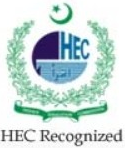
Y-Category
Authors are invited to make a submission to this journal. All submissions will be assessed by an editor to determine whether they meet the aims and scope of this journal. Those considered to be a good fit will be sent for peer review before determining whether they will be accepted or rejected.
Before making a submission, authors are responsible for obtaining permission to publish any material included with the submission, such as photos, documents and datasets. All authors identified on the submission must consent to be identified as an author. Where appropriate, research should be approved by an appropriate ethics committee in accordance with the legal requirements of the study's country.
An editor may desk reject a submission if it does not meet minimum standards of quality. Before submitting, please ensure that the study design and research argument are structured and articulated properly. The title should be concise and the abstract should be able to stand on its own. This will increase the likelihood of reviewers agreeing to review the paper. When you're satisfied that your submission meets this standard, please follow the checklist below to prepare your submission.
All submissions must meet the following requirements.
The names and email addresses entered in this journal site will be used exclusively for the stated purposes of this journal and will not be made available for any other purpose or to any other party.

Y-Category
The Kashmir Journal of Science (KrJS) is official publication of University of Azad Jammu & Kashmir. The KrJS is multidisciplinary peer reviewed open access journal. The KrJS welcomes submission of articles (Research & Review) in all scientific fields for the year 2025, which are not under review in any other conference or journal. The Journal does not charge a submission fee or Article Processing fee. For all details About this Journal and Articles Publication please click.